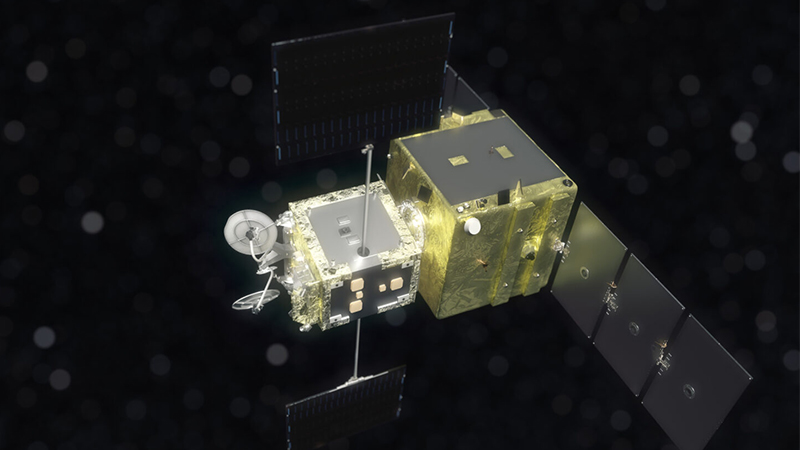

Image Courtesy: Astroscale
In the last two decades, awareness of the presence and dangers of space debris has risen massively. While it’s not a new subject, the exponential increase of satellites in orbit has made it an ever-growing problem.
However, we currently lack regulations and solutions for dealing with the issue. Japan-based company Astroscale, was established to help tackle space debris to make future missions safer. Among its current services is ELSA-M, which is what we’ll discuss below.
Short for End-of-Life Services by Astroscale, the ELSA project is pretty self-explanatory. The company plans to send craft into orbit to capture space debris, safely returning it to Earth where it can be disposed of properly. The “M” refers to this specific mission testing the capabilities of capturing multiple client satellites on a single mission.
It’ll run on Astroscale’s proprietary satellite capture technology, which uses rendezvous technology and tumbling capture to potentially engage with all kinds of satellites, whether they’re currently operational or not.
The current technology relies on magnets: the capture craft magnetically docks to the client object, taking it on board and returning to Earth. Of course, this is only relevant for demonstration procedures or future satellites built with the magnet equipped. Astroscale plans to use these demonstrations to test its capture technology so it can be developed without magnets.
All this has already been tested on the ELSA-d mission, launched in March 2021. Elsewhere, Astroscale is testing its Active Debris Removal technology, which is what will feature on the ELSA-M launch. This is what will allow it to interact with old debris that’s not equipped with magnets.
The overall mission to deal with space debris is important, but not what we’ll discuss here. Astroscale has already demonstrated its ability to do this, and we’ve already looked at that.
Instead, we’ll consider capturing multiple clients in a single trip, as that’s the point of this specific mission. So, why is it important for a debris capture craft to deal with more than one piece of debris?
It comes down to two main points: cost and sustainability. As with any reusable spacecraft, the ELSA will have a relatively short lifespan, which will only be shorter by interacting with debris. However, increasing its usability makes sense, considering its mission is to make orbit more sustainable. Dealing with multiple pieces of debris per mission means a better return on investment.
And this brings us to the second point: cost. ELSA will initially be fairly expensive, and capturing multiple client satellites per mission will drastically reduce this cost. It’s the same logic behind launchers carrying several satellites per mission: if everyone shares the cost, they each pay less.
The bottom line is that removing more than one piece of debris per mission just makes sense. Considering there are more than 28,000 pieces of debris currently in orbit (by ESA records), the ELSA-M will speed up the process, if nothing else.
Astroscale plans to launch its ELSA-M test in 2025 to test an end-to-end operation. Provided the test goes well, we will likely see it incorporated into a wider range of debris removal strategies, as there is no one single answer. The next few years will be crucial in deciding what works best, but Astroscale will likely remain a major player.
